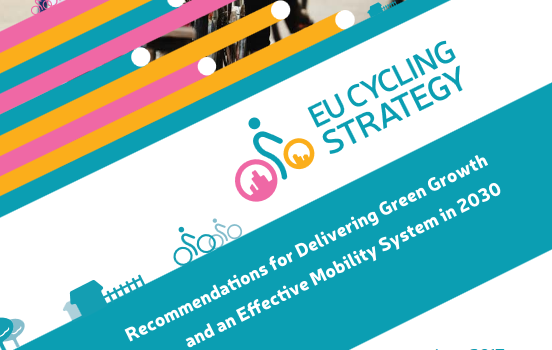EU Cycling Strategy presented to Commission

At the Velo-city 2017 conference, the European Commissioner for Transport, Violeta Bulc, was presented with the EU Cycling Strategy. Outlining a suggested course of action until 2030, the document is intended to serve as inspiration for a future Commission-developed strategy.
Approximately 1,000 individuals were involved in the process of formulating the Strategy, whilst it was primarily composed by an expert group of 27 members, representing 15 governmental and non-governmental organisations, academia, and business.
With the right support, the Strategy envisages potential for a modal shift in European transport habits, whilst arguing that such a document (and indeed cycling) would help the EU to achieve other key socioeconomic objectives, including combating climate change, creating jobs, and improving public health and the environment.
EU policies related to cycling are analysed, with a series of recommended actions provided that are based upon these. These include:
- streamlining cycling into all relevant EU funding programmes;
- the establishment of an EU-wide policy framework and guiding principles for cycling infrastructure development;
- the incorporation of EuroVelo, the European cycle route network, into the Trans-European Transport Networks;
- integrating new technology that improves cyclists' safety into vehicle regulation rules, such as the mandatory fitting of overridable Intelligent Speed Assistance that helps drivers to remain within speed limits;
- Member States being allowed to reduce VAT for bicycle purchases;
- the establishment of a Cycling Focal Point to coordinate and implement cycling strategy at EU level;
- standardising cycling-related key performance indicators at the European level.
It claims that reaching the Strategy's quantitative objectives would:
- see the economic benefits of cycling increase by nearly 50% (€513 - 760 billion);
- create an additional 225,000 jobs in the cycling economy;
- lead to 50% more cycling trips per day (160 – 240 million) by 2030;
- halve the number of cyclists killed per 100 million km cycled;
For this to be achieved, EU investment in cycling projects should be doubled in the Commission's next two budgets, rising to €3 billion from 2021-2027 and €6 billion from 2028-2034.
Several EU mobility stakeholders called for the development of an official EU Cycling Strategy to be included "as part of the Commission's Work Programme for 2018 or in subsequent initiatives."
To read the full strategy and summary, visit here.






